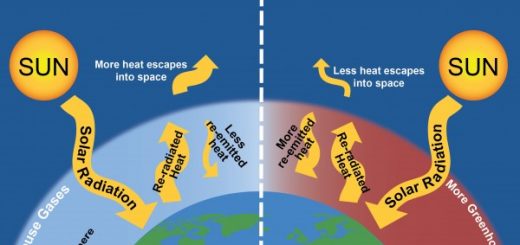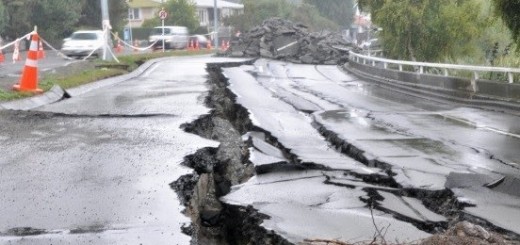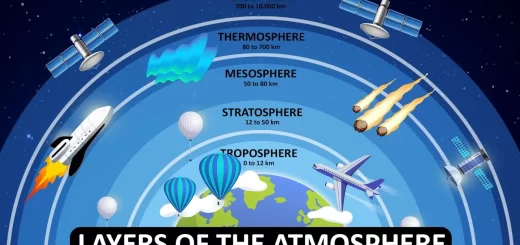Atmospheric layers and pressure, Troposphere, Stratosphere, Mesosphere and Thermosphere
Air forms a gaseous envelope that surrounds the Earth, known as the atmospheric envelope or atmospheric air. The atmospheric envelope of the Earth is a gaseous envelope surrounding the Earth that rotates with it around its axis and extends for about 1000 km above sea level.
Atmospheric pressure
Any matter has a mass, a volume, and a weight, so the atmospheric envelope of the Earth has a weight known as the atmospheric pressure, Atmospheric pressure is the weight of the air column of an atmospheric height on the unit area (1m2).
The atmospheric pressure is measured by a unit called a bar or a millibar, [1 bar (b) = 1000 millibar (Mb)]. Normal atmospheric pressure is the atmospheric pressure at sea level and it equals 1013.25 Mb. The internal pressure in the human body is equivalent to the external atmospheric pressure. the change of atmospheric pressure with the change in height above sea level.
The atmospheric pressure increases on going under sea level, due to increasing the length of the air column and thus its weight increases. The atmospheric pressure decreases on going above sea level, due to decreasing the length of the air column, and thus its weight decreases. The atmospheric pressure differs from an area to another on the Earth’s surface due to the difference in the length of air column from an area to another on the Earth’s surface.
50% of the mass of atmospheric air is present in the area between sea level and 3 km height, 90% of the mass of atmospheric air is present up to 16 km height above sea level, If the density of air on going above sea level, the density of air decreases.
The instruments for measuring the atmospheric pressure
- Aneroid is used to determine the possible day weather based on atmospheric pressure.
- The altimeter is used in airplanes to measure the elevation of navigation based on atmospheric pressure.
The greatest atmospheric pressure could be recorded on the surface of the Earth in January 1968 in Siyberia and it was 1080 Mb, whereas the lowest atmospheric pressure was in the center of the tropical hurricane “Typhoon” in 1979 and it was 870 Mb.
Atmospheric pressure maps
In the atmospheric pressure maps, points of equal pressure are joined by curved lines known as Isobar, Isobar is Curved lines that join the points of equal pressure in atmospheric pressure maps.
The wind blows from one region to another on the Earth’s surface due to the difference in atmospheric pressure from a region to another on the Earth’s surface, where the wind moves from regions of high atmospheric pressure to that of low atmospheric pressure.
Layers of the atmospheric envelope
The atmospheric envelope consists of four layers above sea level, which are classified according to the change in atmospheric pressure, and the temperature change. Layers of the atmospheric envelope are Troposphere, Stratosphere, Mesosphere, and Thermosphere.
There is a region between every two successive layers. In these regions, the temperature remains constant. The tropopause is the region between the troposphere and stratosphere. Stratopause is the region between the stratosphere and mesosphere. Mesopause is the region between the mesosphere and the thermosphere.
Troposphere
Troposphere means the disturbed layer because all atmospheric turbulences (weather changes) take place in it. The troposphere layer is the first layer of the atmospheric envelope.
Characteristics and the importance of the troposphere layer
The troposphere layer extends for about 13 km above sea level to the tropopause. Troposphere thickness is about 8 km above the two poles and 18 km at the equator so, average troposphere thickness = (8+18 / 2) = 13 km.
The atmospheric pressure in this layer decreases as we go up until it becomes 100 Mb nearly at its top 100 Mb = 0.1 bar (0.1 of the normal atmospheric pressure at sea level).
All-weather phenomena are present in the troposphere layer because it contains about 75% of the mass of the atmospheric air. The troposphere layer organizes the Earth’s temperature because it contains 99% of atmospheric water vapour.
Weather phenomena such as rain, wind, clouds, ….. etc. take place in the troposphere layer that forms the weather conditions and consequently up the climate, which affect the activities of living organisms because it contains about 75% of the mass of the atmospheric envelope.
The air movement in this layer is vertical, because the hot air currents (of less density) move upwards, while cold air currents (of high density) move downwards. The temperature of this layer decreases at a rate (6.5°C) for each (1 km) height until it reaches the lowest value of about (-60°C) at the tropopause.
The temperature at the top of a mountain is less than that at its foot because, in the troposphere layer, the temperature decreases as we go up by a rate (6.5°C) for each 1 km height. We can calculate the amount of change in the temperature in the troposphere layer using the following relation:
The amount of change in temperature (decreases or increase) = the height above sea level (km) × 6.5
We can calculate the temperature at the top of a mountain or at its foot from the following relations:
- The temperature at the top of a mountain= the temperature at its foot – the amount of decrease in temperature.
- The temperature at the foot of a mountain= the temperature at its top + the amount of increase in temperature.
Stratosphere
The stratosphere layer is called the ozonic atmospheric envelope because it contains most of the ozone gas (O3) which is found in the atmospheric envelope. It is the second layer of the atmospheric envelope. It extends from tropopause (at a height of 13 km above sea level) to stratopause (at a height of 50 km above sea level) with a thickness of 37 kilometers.
The atmospheric pressure in this layer decreases as we go up until it becomes 1 Mb at its top 1 Mb = 0.001 bar (0.001 of the normal atmospheric pressure at the sea level). It contains most of the ozone gas (O3). which extends from 20 km to 40 km height above sea level so it is called the ozonic atmospheric envelope.
The lower part of such layer does not contain clouds or weather disturbances and the air movement is horizontal, so pilots prefer to fly their planes in this layer.
At the lower part, the temperature is constant and measure (-60°C) then increases gradually until it reaches (0°C) at the top of the layer, this is due to the absorption of ultraviolet rays (emitted from the Sun) by the ozone layer which is present at the upper part of this layer.
Temperature is high in the upper part of the stratosphere layer, this is due to the absorption of ultraviolet rays (emitted from the Sun) by the ozone layer, which is present at its upper part.
Mesosphere
The mesosphere layer is the middle layer, so it called the mesosphere (meso means middle). It is the third layer of the atmospheric envelope. It extends from stratopause (at a height of 50 km above sea level) to mesopause (at a height of 85 km above sea level with a thickness of 35 kilometers.
The atmospheric pressure in the mesosphere layer decreases as we go up until it becomes 0.01 Mb at its top. It protects the planet Earth from celestial rocky masses that enter the atmospheric envelope of Earth, where some of them burn completely as a result of their friction with air molecules forming luminous meteors.
The mesosphere layer is much vacuumed (highly rarefied) because it contains limited quantities of helium & hydrogen gases only. The mesosphere is considered the coldest layer because the temperature in this layer decreases at a high rate as we go up until it reaches (-90°C) at its top.
Although meteors are burnt in the mesosphere layer, spaceships can’t be burnt during passing in it because their conical fronts disperse the heat and their tails are made of insulating material.
Thermosphere
The thermosphere layer is called the thermal layer because it is the hottest layer of the atmospheric envelope, It is the fourth layer of the atmospheric envelope, It is the fourth layer of the atmospheric envelope. It extends from mesopause (at a height of 85 km above sea level) to a height of 675km above sea level with a thickness of 590 kilometers.
The temperature of this layer increases at a high rate as we go up until it reaches (1200°C) at its top so, it is called the thermal layer. The upper part of the thermosphere layer is called the ionosphere because it contains charged ions.
Ionosphere layer
The ionosphere layer is a layer that contains charged ions and it exists in the upper part of the thermosphere and extends up to 700 km above sea level, It is very important in wireless communications and broadcasting because it reflects radio waves transmitted by radio stations and communications centres.
Van-Allen belts
The ionosphere is surrounded by two magnetic belts known as Van-Allen belts which is related to the scientist Van-Allen who discovered them, Van-Allen belts are two magnetic belts surrounding the ionosphere.
Van-Allen belts play an important role in scattering harmful charged cosmic radiation away from the Earth, which causes the occurrence of the Aurora phenomenon.
Aurora phenomenon is a phenomenon that appears as brightly coloured light curtains seen at both poles (the north and south poles) of the Earth.
Exosphere layer
The exosphere is a region in which the atmospheric envelope extends into outer space. Satellites that float in the exosphere [around the Earth] are used to transmit weather condition information and TV programs. The Egyptian satellite (the Nile sat) transmits some different educational channels, which you can watch through the digital space channels.
The characteristics and the importance of the troposphere layer
The characteristics and the importance of the stratosphere layer
The characteristics and the importance of the mesosphere layer
The characteristics and the importance of the thermosphere layer
Erosion of Ozone layer, Global warming phenomenon & Greenhouse effect



